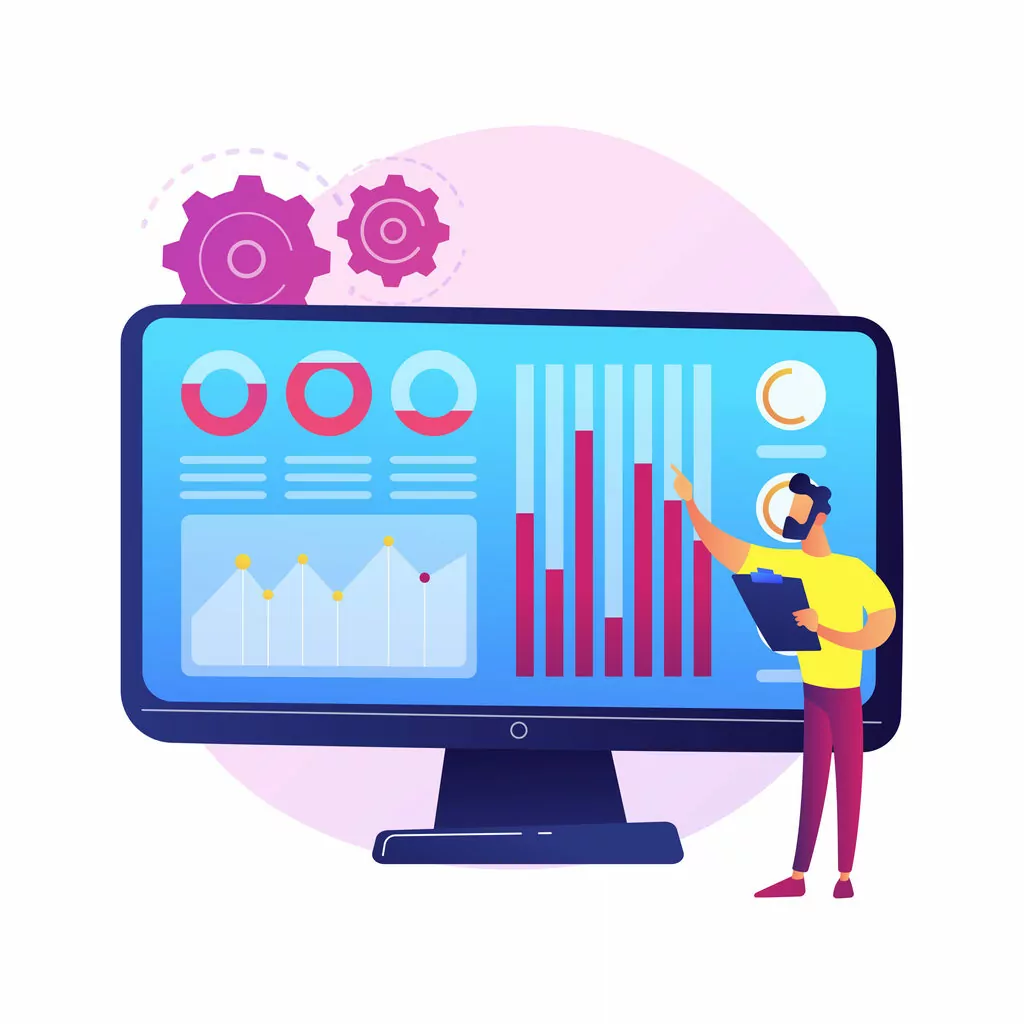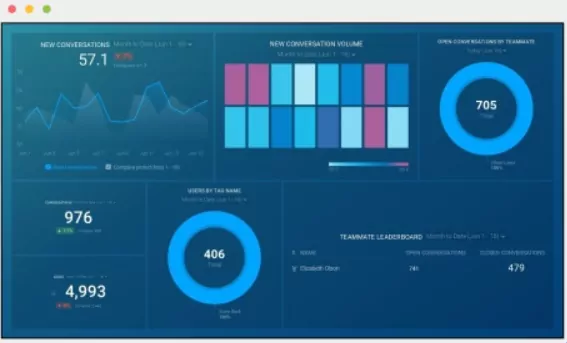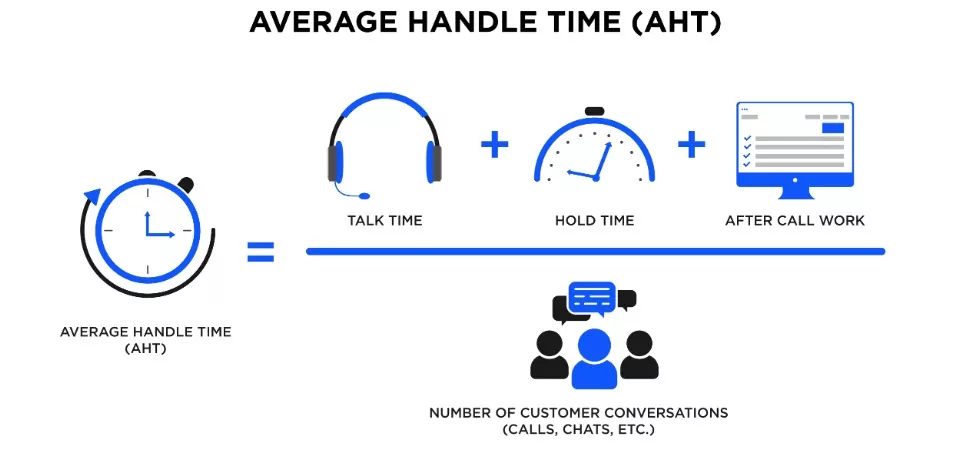To understand how productive and effective your agents are, you need to track their performance metrics. An agent performance dashboard is an ideal solution.
With a performance dashboard, you can look for areas that need improvement to help your team and individual agents be more effective. However, some metrics are more important and revealing than others.
Here, you will learn which metrics you should include in your agent performance dashboard and why.
Key Takeaways
- An agent performance dashboard gives you a quick overview of the performance metrics for each agent.
- Choose metrics that are within an agent’s control and won’t negatively affect the customer experience.
- Metrics like customer satisfaction, transfer rate, and average handle time can give you a good insight into an agent’s performance.
What Is an Agent Performance Dashboard?
An agent performance dashboard is an automated system that gives managers the tools they need to manage their teams more effectively. Users can customize the information they want to see with a few clicks, including data from a specific time and certain metrics. It can work in tandem with a sales performance dashboard.
Close monitoring of your agents’ performance can help improve the overall customer service within your call center.
There are a variety of performance dashboard systems to choose from. Your system might look something like the image below.
Source: databox
10 Performance Metrics to Include in Your Agent Performance Dashboard
You can track where your agents need to improve and where they are excelling by monitoring key performance metrics. Close monitoring of your agents and their performance can help improve the customer experience.
When choosing the metrics to follow, consider the following:
- Is it something the agent can control? You should only hold agents accountable for the metrics they can control. For example, they have no power over the number of incoming calls or how quickly they answer each call.
- Are there metrics that can negatively affect customer service? Some metrics may seem natural to track, like average handle time. However, holding agents accountable for shortening this time could cause them to rush through calls before adequately addressing each customer’s issue.
With these considerations in mind, here are 10 metrics you should add to your agent performance dashboard.
1. Average Handle Time
Average handle time is how much time passes between the beginning and end of each customer interaction. While this is an important metric to track, placing too much emphasis on it can lead to agents rushing through calls instead of giving each customer the attention he or she deserves.
Instead of focusing on each agent’s average handle time, you should monitor any outliers. Are there agents who are spending too much or too little time on each call?
Source: getvoip
2. Quality Monitoring
If you are a call center manager, you likely spend time listening to your agents while they interact with customers. This is a critical component of improving their performance. The best quality monitoring occurs when you can both listen to the audio call and see the agent’s screen. These elements can identify where the agent might need feedback, coaching, or more training.
3. Transfer Rate
While some calls will inevitably need transferring, every agent should do their best to resolve customer requests with the first interaction. As a manager, you should again look for transfer rate outliers. If agents transfer too many calls, they likely need individual guidance.
4. Unavailable Time
Unavailable time would be when an agent places themselves in an “unavailable” status and cannot take incoming customer calls. This time should be separate from break times, training, lunch, etc. You should communicate to your agents how much “unavailable time” they can use each day. Monitor agents closely to make sure they are not abusing this time.
5. Agent Occupancy
Agent occupancy is the time spent each day taking calls or doing after-call tasks. If this metric is too high, say over 85%, agents may start feeling overwhelmed. Agents need break time and other down times to relax throughout the day. This can help them feel more focused and ready to do their jobs. On the other hand, if rates are too low, your agents aren’t focusing on work.
6. Schedule Observance
In a call center environment, schedule observance is critical to ensuring you always have adequate staffing. The schedule observance or adherence metric will track how well each agent sticks to his or her schedule. You can easily find agents who are struggling to get to work on time or spending too much time taking breaks.
7. Customer Satisfaction
You should allow your customers to score their interactions with your agents. They can rate politeness, effectiveness, and other factors within the agent’s control. Track each agent’s customer satisfaction score to see how they rate for each factor. From there, you can provide additional training, as needed, to help them improve.
8. First Contact Resolution
In an ideal world, agents would resolve every customer call on the first contact. Unfortunately, this does not always happen. Look for agents that have a high transfer rate, frequently hand calls to supervisors, and have customers calling back again.
The best way to achieve a high first contact resolution is to give your agents the right training and enough power to act and not focus on metrics that work against it.
9. After-Call Work
After a call has ended, agents typically need some time to wrap up. This after-call work is important as you want agents to record customer interaction thoroughly and accurately. However, if an agent’s after-call work time is excessive, this could signify a problem. Perhaps the agent needs more training, or they are wasting time before taking the next call. To keep this metric down, keep after-call work simple.
10. Average Hold Time
In general, customers do not like being placed on hold. If an agent has an excessive average hold time, they may be struggling to find the answers to customers’ questions or having difficulty with your call systems. Monitor these agents to discover the root of their hold time issues.
Improve Agent Performance and the Customer Experience with Automation
Automated systems can help improve agent performance and the overall customer experience. MXTR Automation has the tools your business needs to realize those improvements.
Ready to see how MXTR can improve your business? Schedule your free demo today.
Featured Image: istockphoto









